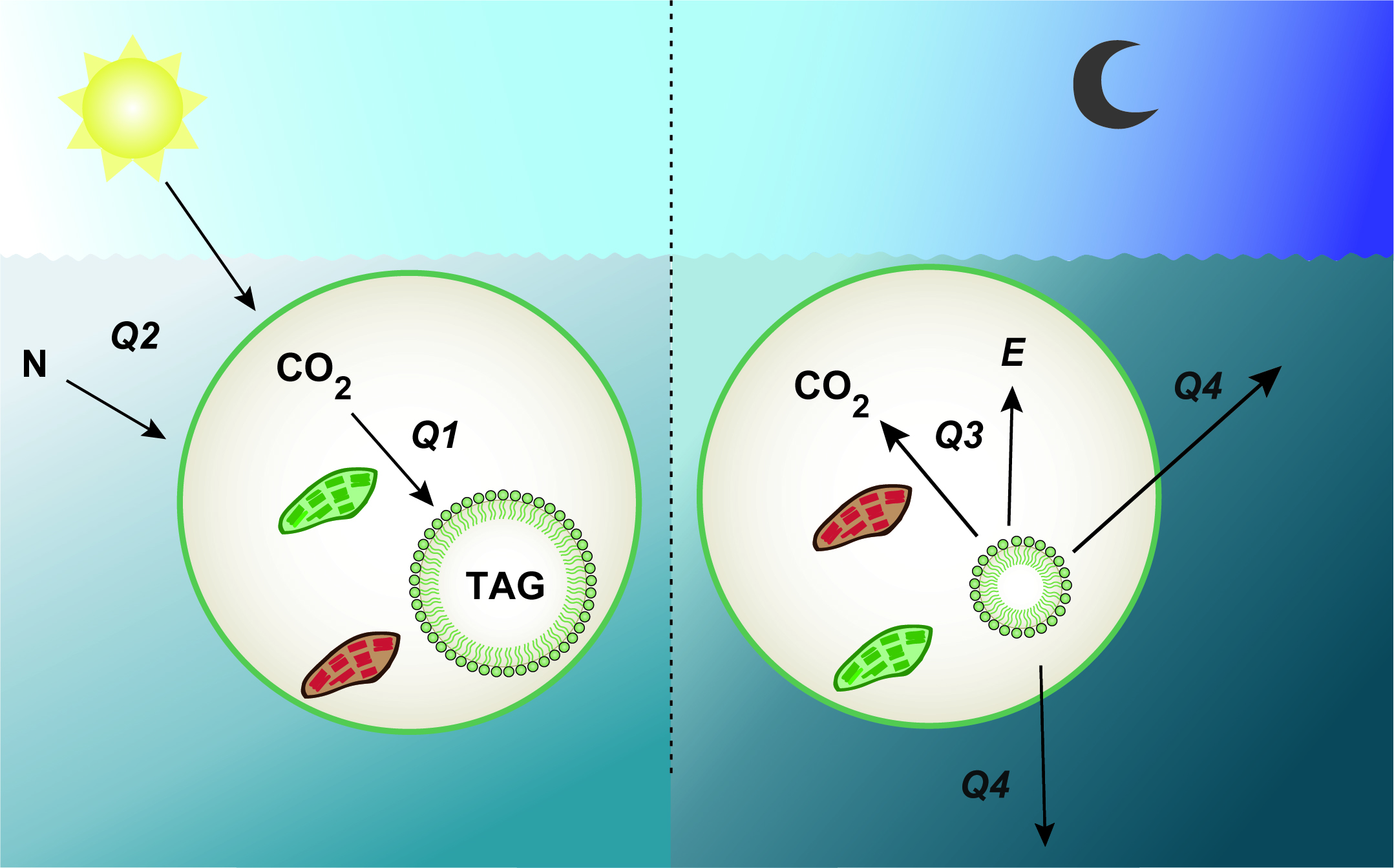The Production and Fates of Fats in the Upper Ocean
Several seminal studies in the 1980s established the molecular distribution of TAGs in suspended and sinking particulate organic carbon (POC). Yet this early work did not capture the dynamism of these molecules. As such, we do not know what physical, chemical, or biological factors determine the quantity of primary production devoted to TAG synthesis. Phytoplankton must build reserves of organic matter during the day to fuel their metabolism at night when deprived of sunlight, and TAGs are likely to play a role in this. Indeed, we discovered that nearly all of the TAGs produced during the day in the NPSG disappeared at night. Oceanographers have only cursory constraints on nighttime TAG drawdown due to phytoplankton metabolism, consumption by grazers and other processes, or loss from the euphotic zone by sinking POC export. Thus, numerous fundamental questions about TAGs in the oceans remain. By answering them, we will make significant advances in the understanding of TAG metabolism in phytoplankton, elucidate roles TAGs play in the marine carbon cycle, constrain their global importance by studying TAGs in multiple disparate environments, and set the groundwork for future research on these vital and quantitatively significant molecules.

Schematic of the diel fat (TAG) oscillation in the NPSG. This proposal seeks to answer four questions (Q) which will elucidate the production and fate of these molecules in the ocean. Note the green organelle represents chloroplasts where TAG building blocks are made and the red organelle represents a mitochondria where beta-oxidation takes place. Question 1: What is the gross production rate of TAGs by phytoplankton during the day, and what fraction is consumed by these autotrophs at night? Question 2: What environmental factors affect rates of net TAG production? Questions 3: What fraction of net TAG production is exported in sinking particles, and what fraction is consumed by processes in the euphotic zone?
